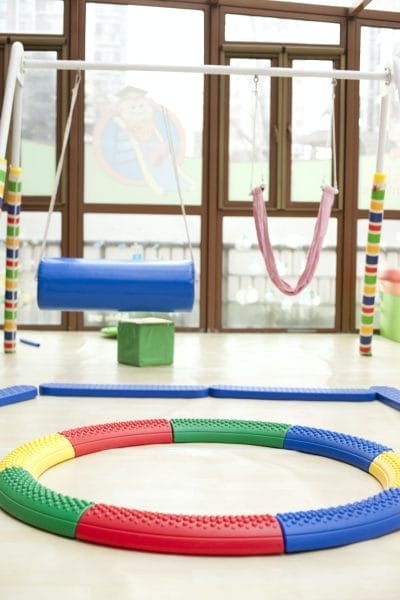Choosing the Right Play Equipment: Benefits and Tips
Play is the universal language of childhood. It is through play that children explore the world, learn new skills, and engage with their peers. At the heart of this playful exploration is play equipment – the structures, tools, and toys that children use to imagine, create, and enjoy. From towering slides to colorful ball pits, play equipment is more than just fun; it is instrumental in the cognitive, physical, and social development of kids.
In this article, we delve into the various types of play equipment, their benefits, and how to choose the best options for your children or community space.

Kids Play Equipment: A Foundation for Growth
![]()
When we think of kids play equipment, the images that often come to mind are playgrounds with swings, slides, and monkey bars. These staples of childhood play are not only sources of enjoyment but also crucial for developing a child’s motor skills, balance, and coordination. The act of climbing, for instance, strengthens muscles and enhances spatial awareness, while swinging can improve a child’s sense of rhythm and motion.
- Swings: Encourage balance and spatial orientation
- Slides: Develop coordination and sense of achievement
- Monkey Bars: Strengthen upper body and promote problem-solving
But kids play equipment extends beyond the traditional playground. With the rise of technology and indoor lifestyles, the importance of active play has never been more emphasized. This has led to the innovation and expansion of play equipment options.
Soft Play Equipment: Safe and Engaging Fun
![]()
Soft play equipment is designed to provide a safe environment for younger children to play and explore. These pieces of equipment are typically made from foam and covered with a durable vinyl, ensuring that children can tumble and jump without the risk of injury. This type of play equipment often includes puzzles, climbing frames, and ball pits, which are not only fun but also stimulate cognitive development and sensory skills.
- Foam Blocks: Stimulate creativity and problem-solving
- Climbing Frames: Enhance strength and gross motor skills
- Ball Pits: Improve hand-eye coordination and social interaction
Soft play areas are popular in indoor play centers, nurseries, and even homes, providing a weatherproof option for play that can be enjoyed year-round.
Indoor Play Equipment: Fun Without the Sun
![]()
Indoor play equipment is a broad category that includes everything from soft play to intricate play structures designed for indoor playgrounds and activity centers. The benefit of indoor play equipment is that it’s accessible regardless of weather conditions, making it a favorite for parents and educators alike. For instance, indoor climbing walls and trampolines offer vigorous activity that helps burn energy and build strength, while imaginative play setups like playhouses and kitchens encourage role-playing and social skills.
- Climbing Walls: Foster risk-taking and confidence
- Trampolines: Improve cardiovascular health and coordination
- Imaginative Play Sets: Encourage creativity and language development
Indoor play equipment is also designed with space constraints in mind, often featuring multi-level structures that maximize play value without requiring a large footprint.
Outdoor Play Equipment: Embracing Nature and Adventure
![]()
Outdoor play equipment offers children the chance to connect with nature and engage in more adventurous play. These structures are built to withstand the elements and provide a variety of activities that blend physical challenges with nature exploration. Traditional equipment like swing sets and slides are often joined by climbing rocks, rope courses, and sandboxes, to create a dynamic play environment.
- Climbing Rocks: Introduce natural textures and encourage physical endurance
- Rope Courses: Build coordination and problem-solving abilities
- Sandboxes: Foster tactile experiences and imaginative play
Additionally, outdoor play equipment often encourages community interaction, as playgrounds become gathering spaces for families and friends, fostering social development and community building.
Backyard Play Equipment: Personal Playgrounds at Home
![]()
Backyard play equipment allows families to create personalized play spaces that cater to their children’s interests and needs. From elaborate swing sets to inflatable water slides, the options for home play equipment are vast. These personal playgrounds provide the convenience of playtime at any moment, encouraging children to be active and engaged without leaving the safety and comfort of their own yard.
- Swing Sets: Offer personal space for motor skill development
- Inflatable Water Slides: Provide seasonal fun and active play
- Playhouses: Create a space for imaginative role-playing and independence
By choosing the right backyard play equipment, parents can ensure that their children have access to play that not only entertains but also contributes to their overall development.
Choosing the Right Play Equipment
![]()
When selecting play equipment, whether for public spaces or personal use, there are several factors to consider:
- Safety: The equipment should comply with safety standards and be appropriate for the age group it serves.
- Durability: High-quality materials that can withstand repeated use and weather conditions are essential.
- Developmental Benefits: Choose equipment that promotes a range of developmental skills, from physical to cognitive and social.
- Space: Consider the space available and ensure that the equipment fits comfortably with room for safe play.
- Accessibility: Inclusive play equipment that accommodates children of all abilities is important for community spaces.
By keeping these factors in mind, you can select play equipment that is not only enjoyable but also contributes positively to the growth and development of children.
Frequently Asked Questions
![]()
What are the safest materials for play equipment?
Play equipment made from wood, metal, and heavy-duty plastics are generally considered safe. Look for materials that are smooth with rounded edges, and check that the equipment has no splinters, rust, or peeling paint that could harm children.
How do I choose the right size play equipment for my child?
Consider your child’s age, physical abilities, and interests. Equipment should be challenging but not too difficult to use. Also, ensure there’s enough space for safe play around the equipment.
Can play equipment be used indoors and outdoors?
Some play equipment is versatile and can be used both indoors and outdoors. However, make sure the equipment is designed for the intended use. Outdoor equipment should be weather-resistant, while indoor equipment should be lighter and have features to protect floors.
How do I maintain and clean play equipment?
Regularly check for loose bolts, sharp edges, and wear and tear. Clean the equipment with mild soap and water to remove dirt and germs, especially if it’s used frequently or by multiple children.
What safety features should I look for in play equipment?
Look for equipment with strong, stable bases, handrails, and safety barriers where needed. Soft material under play structures, like rubber mats or mulch, can provide cushioning for falls.
How important is it to have a warranty on play equipment?
A warranty can be very important, as it provides protection against manufacturing defects. It can also be a sign of the manufacturer’s confidence in their product’s durability.
What is the best way to anchor play equipment?
For outdoor equipment, anchoring it to the ground is crucial to prevent tipping over. Use appropriate ground anchors, such as metal stakes or concrete, depending on the type of equipment and ground.
Can play equipment be easily assembled by one person?
Some smaller play items can be assembled by one person, but larger structures often require two or more people. Always follow the manufacturer’s instructions for assembly to ensure safety.
How much space is needed for play equipment?
Ensure there’s enough room for children to use the equipment safely. For swings, there should be clearance in front and behind, and for slides, there should be space to land safely.
Are there any specific certifications I should look for when choosing play equipment?
Yes, look for certifications like the ASTM (American Society for Testing and Materials) or CPSC (Consumer Product Safety Commission) which indicate the equipment meets safety standards.
Conclusion: The Lasting Impact of Play Equipment
![]()
Play equipment is far more than just a means to entertain children; it is a catalyst for growth, development, and joy. From the thrill of a slide to the challenge of a climbing wall, play equipment provides a platform for children to learn and thrive. Whether through soft play equipment for the little ones, indoor play structures for year-round activity, outdoor setups that connect kids with nature, or backyard options for convenience, the right play equipment can make a significant difference in a child’s life.
By investing in quality play equipment, we are not only creating fun spaces but also fostering the development of healthy, well-rounded individuals. As parents, educators, and community leaders, it is our responsibility to ensure that the environments we create for play are safe, engaging, and beneficial for every child. With thoughtful consideration and investment in the right play equipment, we can provide children with the tools they need to grow, explore, and imagine – laying the foundation for a lifetime of learning and happiness.

